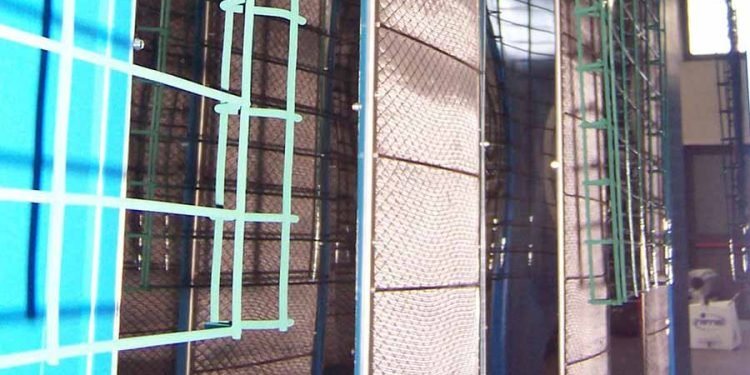Infragas specializes in developing innovative thermal solutions for industrial processes. Among its most popular products we find the radiant systems, which are designed for surface thermal treatments. The radiant system offers precise and controlled heating for a wide range of applications in various industries.
The need for surface thermal treatments
Surface thermal treatments are essential in various industrial processes, such as heat treating, drying, curing, and annealing, among others. These processes require precise and controlled heating to achieve the desired material properties and product quality. Inadequate or ineffective thermal treatment can result in product defects, low-quality products, and even equipment damage.
Efficient and effective surface thermal treatments are crucial in the industry as they help to ensure product quality, increase production efficiency, and reduce production costs. With the increasing demand for high-quality products and sustainability, efficient surface thermal treatment has become more critical than ever. The use of innovative solutions like the radiant systems by Infragas is, therefore, necessary for companies to stay competitive and meet the evolving needs of the market.
How Radiant Systems Work
Radiant systems for surface thermal treatments work by using radiant energy, which is a form of electromagnetic radiation, to transfer heat directly to the surface of a material. This process involves using a heating element that emits infrared radiation, which is absorbed by the surface of the material and converted into heat energy. The temperature of the material can be controlled by adjusting the intensity and duration of the radiation emitted.
Radiant systems for surface thermal treatments offer several advantages over other methods – such as convection heating and conduction heating. Convection heating relies on the transfer of heat through a fluid medium, which can result in uneven heating and longer heating times. Conduction heating requires direct contact between the heating element and the material, which can be difficult to achieve for large or irregularly shaped objects.
In contrast, radiant heating is a highly efficient and effective method for surface thermal treatments that can be used for a wide range of materials and applications.
Benefits
Radiant systems offer several benefits, including:
- Energy efficiency: radiant heating is a highly efficient method of transferring heat, which can result in significant energy savings compared to other methods.
- Precision control: this type of heating allows for precise control of temperature and heating time, which can help to optimize the surface treatment process and improve product quality.
- Versatility: radiant heating can be used for a wide range of materials and applications, including drying, curing, and sintering.
- Reduced emissions: this method produces fewer emissions compared to others, which can help to reduce environmental impact and improve workplace safety.
Overall, radiant systems for surface thermal treatments offer a highly effective and efficient method for achieving high-quality surface treatments in various industrial applications.
Applications
Radiant systems have a variety of applications for surface thermal treatments in different industries.
In the industrial sector, radiant systems are used for a variety of surface thermal treatment applications, such as curing of coatings, drying of products, preheating of materials, and annealing of metals. For example, in the automotive industry, radiant systems are used for surface heating and drying of coatings, and in the glass industry, they are used for annealing and tempering of glass.
Challenges
Despite the many advantages of radiant systems for surface thermal treatments, there are also some challenges and limitations that must be considered.
Installation
One of the main challenges of implementing radiant systems is the cost of installation and maintenance. These systems require specialized equipment and installation.
Compatibility with certain materials and applications
Radiant systems may not be compatible with all types of materials or applications. For example, certain materials may be damaged or deformed by the high temperatures used in radiant heating. It is important to carefully evaluate the suitability of the radiant heating method for each application before implementing it.
Advantages
Radiant systems offer several advantages for surface thermal treatments over other methods. Some of the main advantages are:
Energy efficiency
Radiant systems are more energy-efficient than other surface thermal treatment methods like convection and conduction heating. They heat only the targeted surface, reducing heat loss and energy waste.
Consistency and accuracy of temperature control
Radiant systems provide precise and consistent temperature control for the treated surface. This is crucial in many industrial applications where precise temperature control is necessary to achieve desired properties in the treated surface.
Reduction of processing times
Radiant systems can reduce processing times, resulting in faster production cycles and increased productivity. This is because radiant heat transfers energy directly to the surface, reducing the time needed to heat the products.
The advantages of Radiant systems make them an ideal choice for surface thermal treatments in many industries.
Bringing the Heat to Surface Thermal Treatments
Radiant systems for surface thermal treatments provide numerous benefits, including increased energy efficiency, consistent and accurate temperature control, and reduced processing times.
But it’s not just about the benefits for your business. The adoption of efficient and effective surface thermal treatment methods like radiant systems has far-reaching implications for the world we live in. By reducing energy consumption and emissions, we can all contribute to a more sustainable future.
So let’s heat things up! It’s time for businesses and individuals to take a closer look at the potential of radiant systems from Infragas for their surface thermal treatment needs. By harnessing the power of radiant systems, we can all contribute to brighter, cleaner, and more sustainable surroundings.












